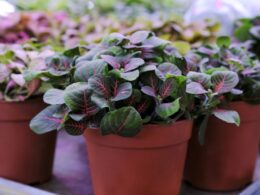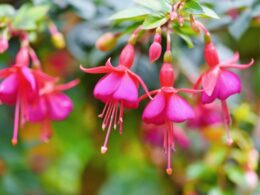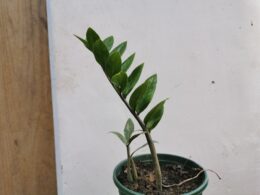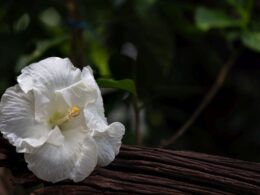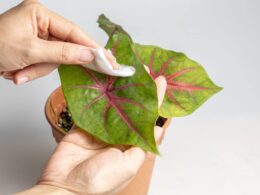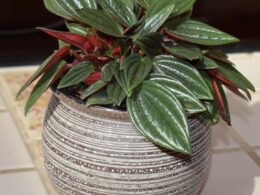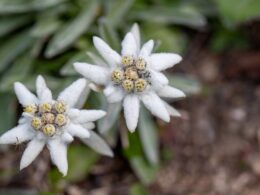What Is a Bird of Paradise Plant? Names, Origin, and Characteristics
Before we delve deep into bird of paradise plant care, let’s introduce it. It’s a striking plant that originates from South Africa. It gets its name from its beautiful flowers, which resemble the plumage of a tropical bird. The name can refer to any member of the Strelitzia genus, which includes five species of perennial plants. These are:
- Strelitzia alba – white bird of paradise;
- Strelitzia caudata – mountain strelitzia;
- Strelitzia nicolai – giant bird of paradise or wild banana;
- Strelitzia reginae – strelitzia, bird of paradise, or crane lily;
- Strelitzia juncea – African desert banana.
Other common names include crane flowers and bird flowers. Out of the five species, two are commonly grown as houseplants – S. reginae and S. nicolai.
The bird of paradise plant is evergreen and typically grows to about three feet tall. It has large, leathery leaves, and its flowers resemble the head and beak of a crane. The plant blooms in the spring and summer, and it is a popular choice for gardens and landscapes.
Bird of Paradise Plant Care – Soil and Fertilization
Bird of paradise plants are native to South Africa, where they grow in well-drained soils that are rich in organic matter. In their natural habitat, they receive regular doses of nitrogen-rich animal manure, which helps to encourage growth.
When grown in captivity, proper bird of paradise plant care involves giving them a similar soil mix. A good quality potting mix that contains peat moss and perlite will provide the drainage and aeration that the roots need. The addition of compost will help to provide the nutrients that the plant needs.
Fertilizing on a regular basis will also be necessary, as bird of paradise plants are heavy feeders. A balanced fertilizer such as 10-10-10 can be applied every two weeks during the growing season. Be sure to follow the manufacturer’s instructions, as too much fertilizer can damage the roots.
Bird of Paradise Plant Care – Watering and Humidity Requirements
The bird of paradise is a relatively easy plant to care for, but it does have specific watering needs. It should be watered deeply, but only when the soil is dry to the touch. Keep the soil moist from spring through fall. Overwatering can lead to root rot, so it is important to let the soil dry out between waterings.
In addition, these plants prefer humid conditions, so it is important to mist the leaves regularly. Alternatively, you could place the pot on a tray filled with pebbles and water. Bird of paradise plant care might be a bit demanding, but it’s worth the effort – your plants will thrive and produce an abundance of beautiful flowers.
Bird of Paradise Plant Care – Light Conditions
While the bird of paradise can tolerate a wide range of light conditions, it prefers bright, indirect sunlight. If the plant is placed in too much shade, it will become leggy and produce fewer flowers. Conversely, if it is exposed to too much direct sunlight, the leaves will develop burn marks. To ensure that your bird of paradise stays healthy and blooms abundantly, give it a bright spot with filtered light.
Bird of Paradise Plant Care – Temperature Requirements
In its native habitat, the bird of paradise typically grows in warm, sunny areas. It prefers temperatures that remain above 50 degrees Fahrenheit, and it won’t survive if exposed to frost. In cooler climates, it can be grown indoors as a houseplant.
Do You Need to Prune Bird of Paradise Plants?
Like with all plants, bird of paradise plant care might involve occasional pruning to keep it looking its best. The good news is that pruning a bird of paradise is relatively simple and straightforward. For the most part, you’ll just need to remove any dead or diseased leaves and stems as they occur. Every few years, you may also need to give the plant a more substantial trimming to control its size and shape.
How to Propagate Bird of Paradise Plants?
Bird of paradise plants are easy to propagate. To start, you’ll need a healthy bird of paradise plant with several leaves. Cut a leaf from the plant, making sure to include a section of the stem. Place the stem in water and wait for it to form roots. Once the roots have formed, you can pot the plant in soil. Be sure to choose a pot that is large enough to accommodate the roots.
How Often Should You Repot Bird of Paradise Plants?
Repot bird of paradise plants every two to three years, or whenever the roots start to become pot-bound. To repot a bird of paradise plant, simply remove it from its current pot and place it in a new one that is only slightly larger.
Common Problems with Bird of Paradise Plants
Bird of paradise plant care isn’t too hard. Still, there are a few problems that you may encounter.
- One common issue is yellowing and curling leaves, which can be caused by too much direct sunlight or overwatering.
- Another problem that you may encounter is leaf drop. This usually occurs when the plant is not getting enough water.
- Finally, bird of paradise plants are susceptible to a variety of pests, including mealybugs, spider mites, and scale insects.
Bird of Paradise Plant Toxicity
The bird of paradise isn’t considered to be toxic to humans or animals. However, the sap from the plant can cause skin irritation in some people. If you are concerned about accidentally coming into contact with the sap, you can wear gloves when handling the plant.
Prepared to Care for a Bird of Paradise Plant?
Bird of paradise plants make a beautiful addition to any home or garden. With their vibrant flowers and lush foliage, they are sure to add a touch of paradise. While bird of paradise plant care might be a bit demanding, it’s well worth the effort.
Do you have any tips for caring for bird of paradise plants? Share them in the comments below!








